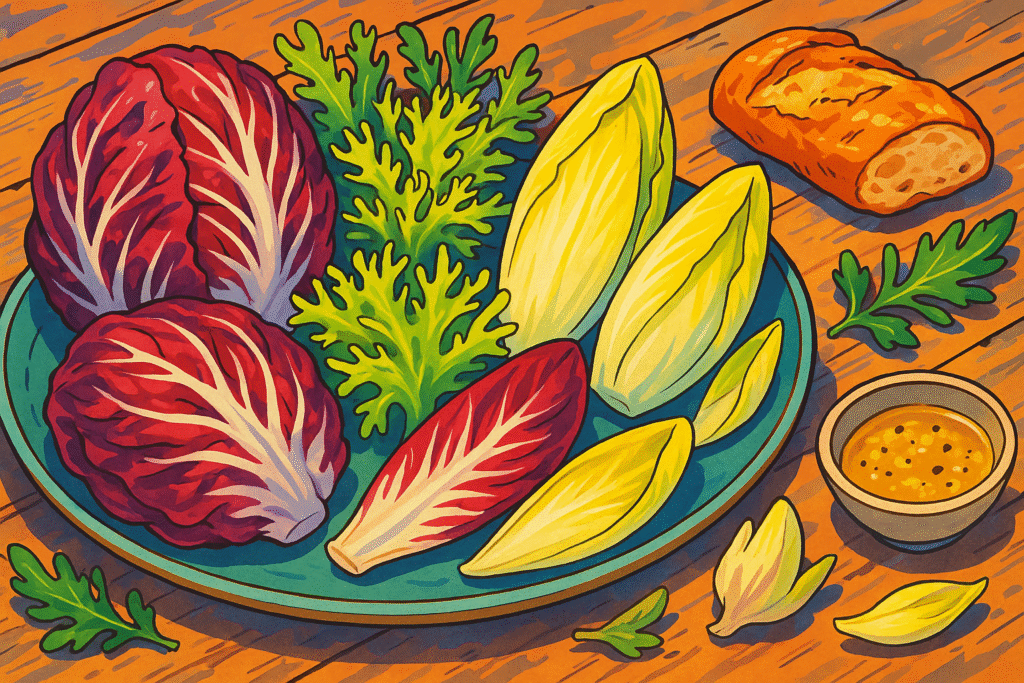Chicory (Cichorium intybus)

About Chicory
Chicory is a bitter green with many faces: from frilly frisée to deep purple radicchio to the pale, crunchy spears of Belgian endive. It’s a staple in European winter salads, often balanced with acid, fat, or fruit to tame its assertive flavor.
Its roots are also roasted and ground as a caffeine-free coffee substitute — especially in French and New Orleans cuisine.
The History of Chicory
Chicory has been used since ancient Egypt, where it was prized for its digestive benefits. The Romans cultivated it as a medicinal herb, and by the Middle Ages, it was a common bittering agent in beer and tonics.
In the 19th century, chicory root gained popularity as a coffee alternative, especially in times of scarcity. That legacy lives on in Louisiana, where café au lait with chicory remains a cultural fixture.
The Science of Chicory
Chicory greens contain lactucopicrin, a compound responsible for their bitterness. They’re rich in vitamin K, folate, and prebiotic fiber — particularly inulin in the root, which supports gut health.
Cooking reduces bitterness, especially when leaves are braised or grilled. The root, once roasted, loses its bite and develops a deep, earthy flavor.
The Geography of Chicory
Chicory grows well in cooler climates and is cultivated widely in France, Italy, Belgium, and the Netherlands. In the U.S., it’s grown in California, the Northeast, and Louisiana (for root production).
Each region favors different types: frisée in France, radicchio in Italy, and Belgian endive in northern Europe.
Varieties of Chicory
Radicchio
Red and white, ball-shaped leaves. Bitter with a crisp crunch — often grilled or paired with sweet dressings.
Belgian Endive
Pale, torpedo-shaped heads grown in darkness. Mild bitterness and firm texture — great in raw wedges or baked.
Frisée (Curly Endive)
Frilly, pale-green leaves with a bitter bite. Common in composed salads like salade Lyonnaise.
Puntarelle
An Italian variety with hollow, crunchy shoots. Served raw with anchovy dressing in Roman cuisine.
Sugarloaf
A milder, elongated head similar to romaine. Less bitter — often eaten raw or lightly grilled.
FAQs All your questions about Chicory: answered
Why is chicory bitter?
It contains natural bitter compounds, particularly lactucopicrin. Bitterness varies by variety and age.
Can you cook chicory?
Yes — grilling or braising softens the texture and reduces bitterness, adding caramelized depth.
What’s the difference between chicory and endive?
They’re part of the same species but vary in form. Belgian endive is a type of chicory grown without light; frisée is a curly-leafed relative.
Is chicory coffee caffeine-free?
Yes — roasted chicory root contains no caffeine. It adds body and roasted flavor to coffee blends.